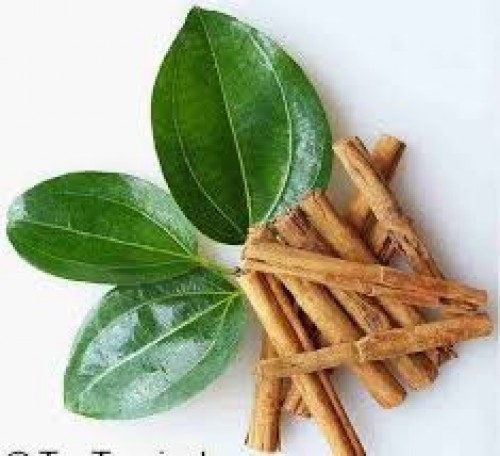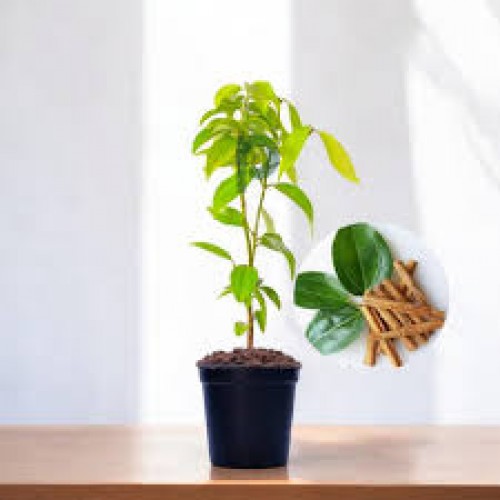off
-
Sold
-

-

out
Cinnamon Plant: Nature, Care & Advantages
Cinnamon (Botanical name: Cinnamomum verum) is a tropical evergreen tree that is native to Sri Lanka and other parts of South and Southeast Asia. The plant is primarily known for its bark, which is used as a popular spice in cooking, baking, and traditional medicine. Cinnamon has a long history of use due to its sweet, spicy flavor and medicinal properties.
Nature of the Cinnamon Plant
The cinnamon plant is a small to medium-sized tree that can grow up to 10-15 meters (33-49 feet) tall. It has thick, leathery, dark green leaves and produces small, yellow flowers in clusters. The cinnamon spice comes from the inner bark of the tree, which is carefully harvested, dried, and rolled into cinnamon sticks or ground into powder. There are two main types of cinnamon: Ceylon cinnamon (true cinnamon) and Cassia cinnamon. Ceylon is considered to be of higher quality, both in flavor and health benefits.
Care for the Cinnamon Plant
- Climate: Cinnamon is native to tropical climates, and it requires warm temperatures to thrive. Ideal temperatures range from 20°C to 30°C (68°F to 86°F). It prefers high humidity and rainfall.
- Soil: Cinnamon plants prefer well-draining, fertile, and slightly acidic soil with a pH of 5.5-6.5. A sandy-loamy soil mixture is ideal for growing cinnamon.
- Watering: Cinnamon requires regular watering, but overwatering should be avoided. The soil should be kept moist, but not soggy, especially during the growing season.
- Sunlight: The plant thrives in full sunlight or partial shade. It should receive at least 4-6 hours of direct sunlight daily for optimal growth.
- Fertilization: Fertilize the plant regularly with a balanced, organic fertilizer to promote healthy growth. Use compost or manure to enrich the soil.
- Pruning: Pruning is essential to maintain the plant's size and shape. It helps stimulate new growth and encourages the production of bark. Cut back older branches and dead wood.
- Propagation: Cinnamon can be propagated from seeds or stem cuttings. If using stem cuttings, take a healthy cutting, root it in moist soil, and ensure it is kept warm and humid until rooted.
Advantages of Growing Cinnamon
- Culinary Uses: Cinnamon is widely used as a spice in both sweet and savory dishes, from baking to curries and beverages. It adds a distinctive sweet, spicy flavor to many foods and drinks.
- Medicinal Benefits: Cinnamon has anti-inflammatory, antioxidant, and antimicrobial properties. It is known for helping regulate blood sugar levels, supporting heart health, and improving digestion.
- Improves Cognitive Function: Studies have shown that cinnamon may enhance brain function, improve memory, and reduce the risk of neurodegenerative diseases.
- Antioxidant-Rich: Cinnamon is loaded with antioxidants, which can help protect the body against oxidative stress and inflammation, potentially reducing the risk of chronic diseases.
- Natural Preservative: The antimicrobial properties of cinnamon make it useful in preserving food and preventing spoilage.
- Aromatic Qualities: The plant’s bark has a strong, sweet fragrance, making it a popular choice in aromatherapy for relaxation and stress relief.
Conclusion
The cinnamon plant is a valuable herb with numerous benefits, from its use in culinary dishes to its medicinal properties. It is easy to care for in the right environment and can thrive in tropical or subtropical climates. Whether you are interested in growing it for its flavorful bark or its health advantages, the cinnamon plant is a great addition to any garden or home. By providing the right care, you can enjoy the many uses of this versatile and aromatic plant.